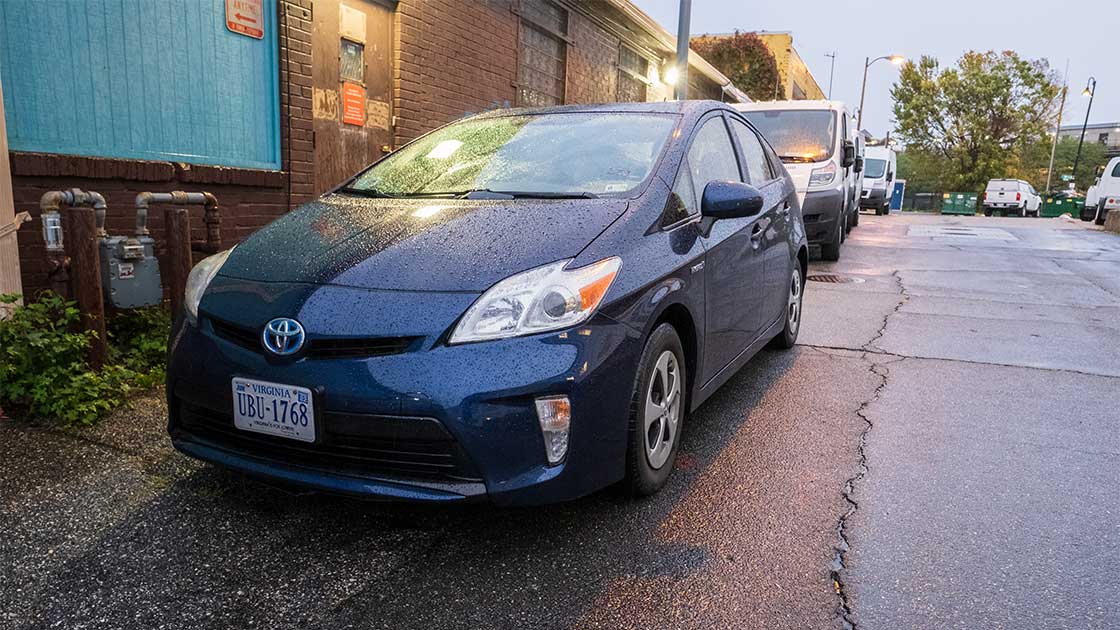Catalytic converters make 2004-09 Toyota Prius unlikely theft target
November 18, 2021

A spike in demand for precious metals has made Toyota Prius vehicles that are more than 10 years old an unlikely target of thieves, a recent report from the Highway Loss Data Institute shows.
Theft claim frequency for 2004-09 Prius models was more than 40 times higher in 2020 than in 2016, HLDI analysts found. As a hybrid car, the Prius is being targeted for the precious metals in its catalytic converter. The catalytic converters of hybrids need more of the precious metals to work properly because they don’t get as hot as those installed on conventional vehicles, since the combustion engines of hybrids only run part of the time.
Thanks to higher prices for platinum, rhodium, palladium and other metals found in the components, catalytic converter thefts rose from about 100 a month in 2018 to more than 1,200 a month in 2020, according to the National Insurance Crime Bureau. While thieves hit all kinds of vehicles, the catalytic converters from some models command higher prices from the recyclers who process them because they contain more of the high-priced metals.
Theft claim frequency was 58.1 claims per 1,000 insured vehicle years for 2004–09 Toyota Prius models in 2020, compared with 1.4 claims in 2016. Overall theft losses for those Prius vehicles in 2020 were nearly $137 per insured vehicle year — a more than 45-fold increase from $3 in 2016, HLDI found. In contrast, theft claim frequency for all other 2004-09 vehicles hardly changed from 2016 to 2020, and overall losses remained about $7. (A standard industry measure, an insured vehicle year equals one vehicle insured for one year, two vehicles insured for six months, and so on).
“Car thieves know their market,” explains HLDI Senior Vice President Matt Moore. “The demand is high for catalytic converters, and they seem to know which ones command the highest prices, like those on the older Priuses.”
The recent scrap price for the GD3+EA6 catalytic converter used in the 2004-09 second-generation Prius 1.5 was $1,022, according to marketplace website AutoCatalystMarket.com, while the scrap price for the GP1+TB1 converter used in the 2010-15 third-generation Prius was $548. In comparison, the converter used in General Motors models such as the Chevrolet Impala and Pontiac Grand Am from 1999-2006 was valued at $269, and the converter used in the 2007 Ford F-150 FX4 was priced at just $143.
The HLDI database does not include information about the specific component reported stolen in insurance claims, but the dollar value of the typical claim provides some clues. For the high-theft years of 2019–20, there was a spike in claims in the $2,501 to $3,000 range (about the amount needed to replace the catalytic converter and exhaust system, minus the deductible). For calendar years 2016-17, most claims were for losses of less than $500 or between $1,501 and $2,500.
Newer, 2010-15 Prius models saw only slight increases in claim frequency and overall theft losses. For calendar year 2020, the claim frequency was only 1.3 claims per 1,000 insured vehicle years for 2010-15 models, up from 0.8 in 2016. Similarly, overall theft losses for 2020 were $5 for 2010-15 models, compared with $3 in 2016.
Processing catalytic converters for their metals requires sophisticated equipment, but bulk scrap buyers have mushroomed with the spike in prices for certain metals. All but a handful of states require buyers to record sellers’ driver’s license numbers or other official identification, and many prohibit cash payments above a certain threshold. However, because catalytic converters are not stamped with vehicle identification numbers, it isn’t easy to identify stolen components once they have been sold as scrap.
Prices for the metals have soared due to lower mining production in recent years, a trend that was exacerbated by the pandemic. Meanwhile, the recent tightening of emissions standards means that the newest catalytic converters require more of the valuable metals.